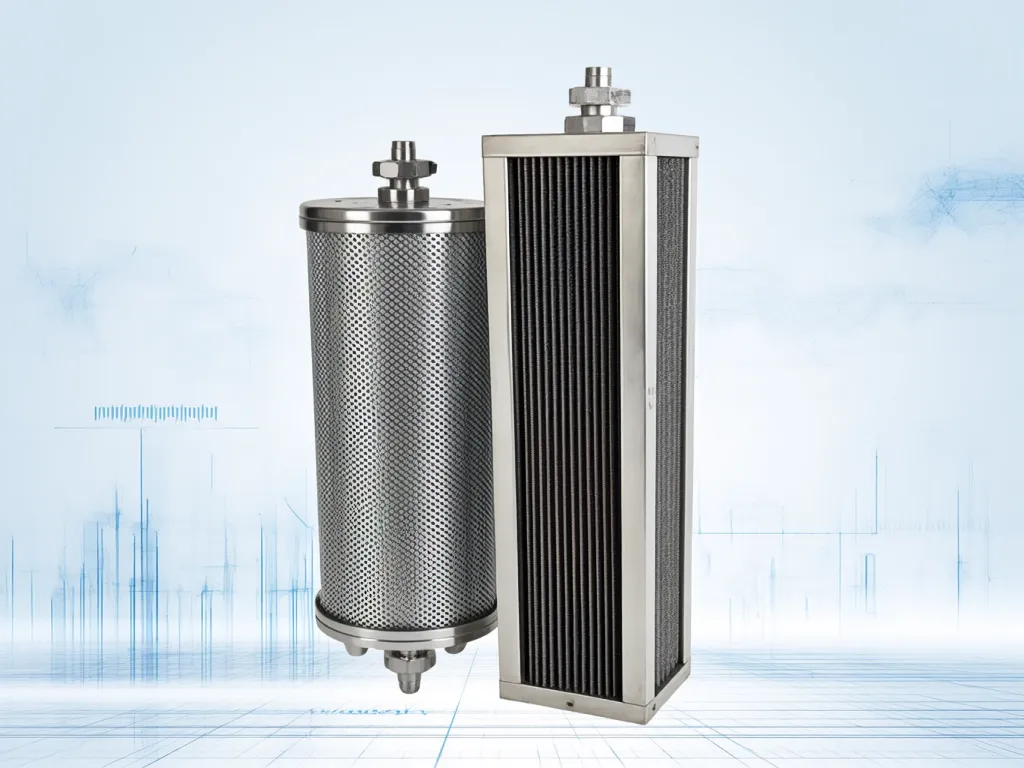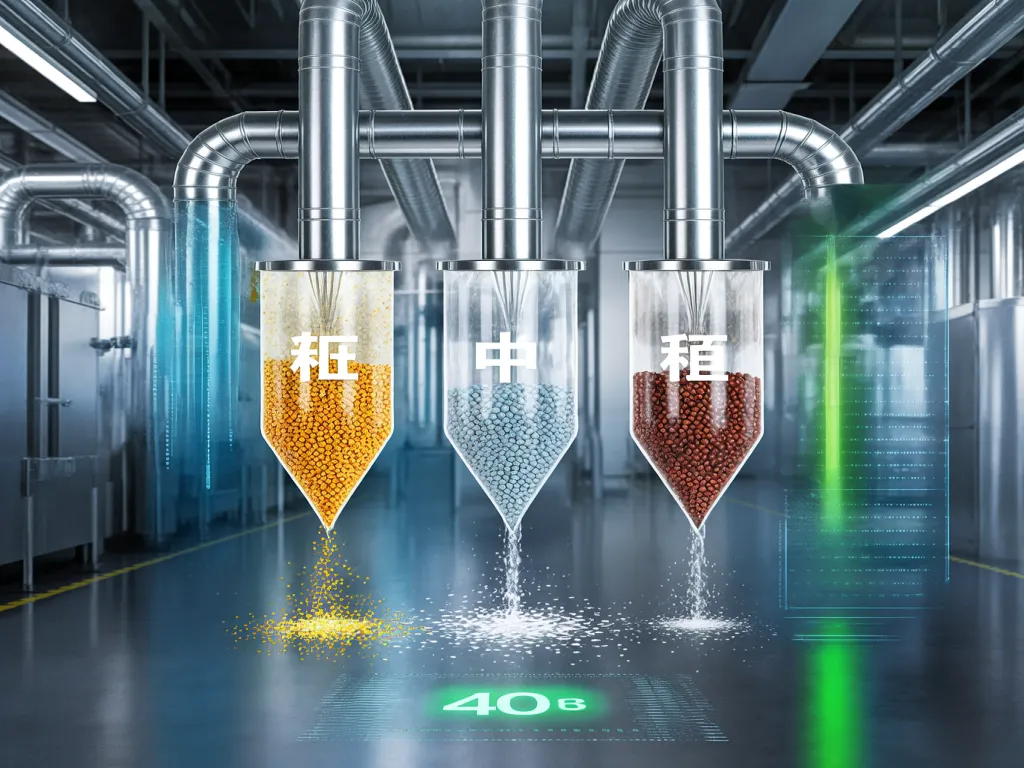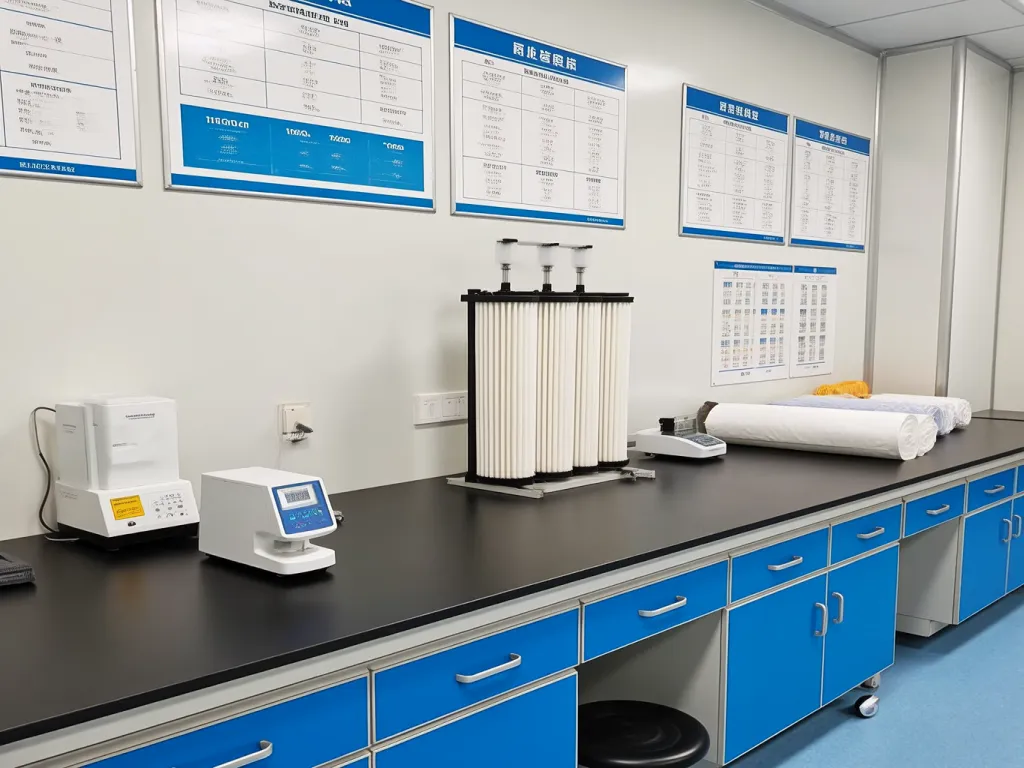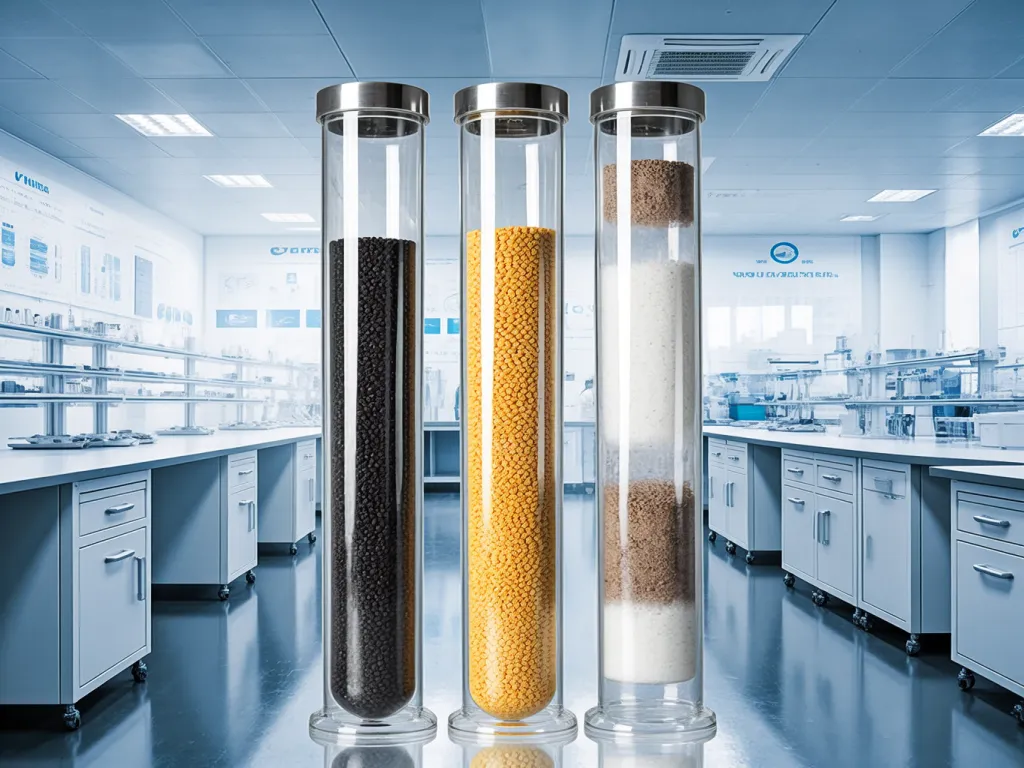Master Particle Size: Filter Bags for Dewatering Guide
When it comes to industrial dewatering, choosing the right filter bags for dewatering can make or break your process efficiency. Have you ever wondered why some dewatering systems outperform others despite using similar equipment? The secret often lies in selecting filter bags that perfectly match your material’s particle size. In this guide, we’ll reveal how precise particle size selection transforms dewatering performance and why standard ‘one-size-fits-all’ solutions might be costing you efficiency. Ready to upgrade your filtration game?

The Impact of Particle Size on Dewatering Efficiency: Analyzing Behavioral Characteristics and Selecting Appropriate Filter Bag Materials and Apertures
When it comes to dewatering processes, the size of the particles in your material mix can make or break your efficiency. Imagine trying to squeeze water out of a sponge filled with tiny pebbles versus one filled with sand. The difference in particle size dramatically affects how easily water can be separated. Let’s dive deeper into how particle size influences dewatering and how to choose the right filter bags for dewatering based on these characteristics.
Firstly, understanding the behavior of different particle sizes during dewatering is crucial. Fine particles, such as clays and silts, tend to form dense, compact layers when compressed. This can be beneficial for water extraction as the particles pack tightly, reducing the space for water to reside. However, fine particles also have a higher surface area, which means they can absorb more water initially. This dual nature requires filter bags with fine apertures to prevent clogging while allowing water to pass through efficiently.
On the other hand, coarse particles like gravel and larger sand grains have larger void spaces between them. While this means water can drain more freely, it also poses a challenge in maintaining structural integrity during the dewatering process. Coarse particles can shift and settle, potentially causing the filter bag to deform or rupture if not properly supported. Therefore, selecting filter bags with a sturdier build and larger apertures becomes essential to accommodate the flow of water without compromising the bag’s structure.
Now, you might be wondering, ‘How do I choose the right filter bag material and aperture size?’ The answer lies in a careful analysis of your material’s particle size distribution. For materials dominated by fine particles, opt for filter bags made from synthetic fibers like polyester or polypropylene. These materials offer excellent resistance to abrasion and chemical degradation, ensuring longevity even in harsh dewatering environments. Additionally, choose filter bags with a smaller aperture size, typically ranging from 1 to 10 microns, to effectively capture fine particles while allowing water to pass through.
For materials with a significant proportion of coarse particles, consider filter bags constructed from heavier-duty materials like nylon or reinforced polyester. These materials provide the necessary strength to withstand the pressure exerted by larger particles. In terms of aperture size, a range of 50 to 200 microns might be more appropriate, depending on the exact particle size distribution. This allows for efficient water drainage while preventing the escape of coarse particles that could clog downstream equipment.
But wait, there’s more to it than just material and aperture size. The filtration efficiency of a filter bag also depends on its design features, such as the presence of a pre-filter layer or a graded pore structure. These features can enhance the bag’s ability to capture particles of varying sizes, improving overall dewatering performance.
In summary, the impact of particle size on dewatering efficiency is profound. By understanding the behavioral characteristics of different particle sizes and selecting filter bags with the appropriate material, aperture size, and design features, you can significantly enhance your dewatering process. Remember, the key to successful dewatering lies in matching the filter bag to your material’s unique properties. So, take the time to analyze your particle size distribution and choose wisely!

Fine Particles: The Double-Edged Sword
Fine particles, while offering advantages in terms of packing density, also present challenges in terms of water absorption and clogging. To overcome these challenges, filter bags with fine apertures and durable synthetic materials are ideal. These bags can effectively capture fine particles without becoming clogged, ensuring continuous water flow and efficient dewatering.
Coarse Particles: Balancing Flow and Structure
Coarse particles require filter bags that can handle the pressure exerted by larger grains while allowing water to drain freely. Heavier-duty materials like nylon or reinforced polyester, combined with larger aperture sizes, provide the necessary strength and flow capacity. Additionally, considering the bag’s design features, such as a pre-filter layer, can further enhance its performance in handling coarse particles.
Design Features: Enhancing Filtration Efficiency
Beyond material and aperture size, the design features of a filter bag play a crucial role in its filtration efficiency. Features like a pre-filter layer or a graded pore structure can improve the bag’s ability to capture particles of varying sizes. This not only enhances dewatering performance but also extends the bag’s lifespan by reducing the risk of clogging and premature failure.

Filter Bag Material and Particle Size Matching Principles
Coarse Particle Sizes (Above 100 Microns)
For coarse particles, you’ll want a filter bag material that can withstand abrasion while maintaining good flow rates. Polyester felt is a popular choice due to its strength and resistance to wear. The open structure of polyester felt allows coarse particles to pass through easily, reducing the risk of clogging. Additionally, polyester’s chemical resistance makes it suitable for a wide range of applications, from mining to wastewater treatment. For more insights on polyester filter bags, you can explore our wholesale polyester dust collector filter bags. But what if your application involves higher temperatures? In such cases, consider nomex filter bags. Nomex is known for its exceptional heat resistance, making it ideal for high-temperature dewatering processes. Its robust fibers can handle the abrasive nature of coarse particles without compromising performance. To learn more about nomex filter bags, check out our wholesale nomex aramid dust filter bags.
Medium Particle Sizes (50-100 Microns)
As we move to medium particle sizes, the challenge shifts slightly. Here, you need a balance between filtration efficiency and resistance to clogging. Polypropylene filter bags offer an excellent solution. Polypropylene is not only chemically resistant but also has a smooth surface that reduces particle adhesion, minimizing the risk of blockages. Its moderate cost and versatility make it a go-to choice for many medium-particle applications. For applications where both durability and filtration precision are required, consider a blended material like polyester-polypropylene. This combination leverages the strengths of both materials, providing robustness against abrasion and efficient filtration for medium-sized particles.
Fine Particle Sizes (Below 50 Microns)
Fine particles demand filter bags with finer pores and higher filtration efficiency. Nylon monofilament filter bags excel in this area. Nylon’s uniform pore structure ensures consistent filtration, capturing even the smallest particles. Its strength and resistance to stretching make it durable enough for fine particle dewatering, where pressure differentials can be significant. Another excellent option for fine particles is PTFE (polytetrafluoroethylene) coated filter bags. PTFE’s non-stick properties reduce particle buildup, while its chemical inertness makes it suitable for aggressive environments. These filters are often used in pharmaceuticals and food processing, where purity and cleanliness are paramount.
Ultra-Fine Particle Sizes (Below 10 Microns)
For ultra-fine particles, precision is everything. Glass fiber filter bags offer the highest level of filtration efficiency, capable of capturing particles as small as 1 micron. Their rigid structure maintains pore integrity under pressure, ensuring consistent performance. However, glass fiber filters require careful handling due to their fragility. In applications where both ultra-fine filtration and durability are needed, consider a composite material like PTFE-membrane glass fiber. This combination provides the filtration precision of glass fiber with the added durability and non-stick properties of PTFE, making it ideal for demanding dewatering tasks.
Choosing the Right Material: A Practical Approach
Selecting the right filter bag material isn’t just about particle size; it’s also about understanding your specific application. Ask yourself: What are the chemical properties of the slurry? What are the operating temperatures and pressures? How often will the filter bags need to be cleaned or replaced? For specialized applications like cement plants, consider exploring our wholesale nonwoven aramid filter bags for cement plants or wholesale cement dust bag filters for more tailored solutions. By considering these factors alongside particle size, you can make an informed decision that ensures efficient dewatering, reduces downtime, and extends the lifespan of your filter bags. Remember, the right material match can transform your dewatering process, leading to higher productivity and lower operational costs.

Actual Case Studies: Successfully Selecting Filter Bags for Dewatering Based on Particle Size
When it comes to industrial dewatering processes, the choice of filter bags for dewatering can make or break your efficiency and effectiveness. One critical factor that often gets overlooked but is incredibly important is the particle size of the material being processed. In this section, we’ll dive into real-world case studies that highlight how selecting the right filter bags based on particle size can lead to optimal dewatering results. Let’s start with a scenario in the mining industry. A mining company was struggling with dewatering their ore slurry, which contained a mix of fine and coarse particles. Initially, they used a standard filter bag that worked okay for the coarser particles but failed miserably with the finer ones. The fine particles would clog the pores of the filter bag, leading to reduced flow rates and increased pressure differentials. This not only slowed down the dewatering process but also increased energy consumption and maintenance costs. After analyzing the particle size distribution of their ore slurry, they decided to switch to a filter bag with a finer mesh size specifically designed for fine particles. The result? A dramatic improvement in dewatering efficiency. The finer mesh allowed water to pass through while retaining the fine ore particles, resulting in a drier cake and faster dewatering times. Now, let’s shift gears to the food processing industry. A dairy plant was facing challenges in dewatering their whey protein concentrate. The whey contained a mix of small protein aggregates and larger fat globules. Using a filter bag with a large pore size led to excessive loss of valuable protein in the filtrate, while a too-fine mesh would get clogged quickly by the fat globules. The solution lay in a multi-layer filter bag with a gradient pore size. The outer layer had a larger pore size to allow the fat globules to pass through while retaining the bulk of the whey. The inner layers had progressively finer pores to capture the protein aggregates. This setup not only maximized protein recovery but also minimized filter bag changes and downtime. Another interesting case comes from the chemical processing sector. A chemical manufacturer was dewatering a slurry containing a wide range of particle sizes, from sub-micron particles to larger crystalline structures. They initially tried a single-layer filter bag, which either got clogged too quickly or allowed too many fine particles to pass through. The breakthrough came when they adopted a composite filter bag made of different materials. The outer layer was a coarse, abrasion-resistant fabric to handle the larger particles, while the inner layers were made of finer, more delicate materials to capture the sub-micron particles. This composite approach provided the best of both worlds: durability and fine filtration. So, what can we learn from these cases? First, understanding the particle size distribution of your material is crucial. Second, there’s no one-size-fits-all solution when it comes to filter bags for dewatering. You need to consider the specific characteristics of your material, including particle size, shape, and distribution. Third, innovative filter bag designs, such as multi-layer or composite bags, can offer significant advantages over traditional single-layer options. By tailoring your filter bag selection to the particle size of your material, you can achieve faster dewatering times, higher product recovery, and lower operating costs. It’s not just about choosing a filter bag; it’s about choosing the right filter bag for your specific needs. So, the next time you’re facing dewatering challenges, take a closer look at your material’s particle size. It might just be the key to unlocking better performance and efficiency in your dewatering process.
Case Study 1: Mining Industry
A mining company was struggling with dewatering their ore slurry, which contained a mix of fine and coarse particles. Initially, they used a standard filter bag that worked okay for the coarser particles but failed miserably with the finer ones. The fine particles would clog the pores of the filter bag, leading to reduced flow rates and increased pressure differentials. This not only slowed down the dewatering process but also increased energy consumption and maintenance costs. After analyzing the particle size distribution of their ore slurry, they decided to switch to a filter bag with a finer mesh size specifically designed for fine particles. The result? A dramatic improvement in dewatering efficiency. The finer mesh allowed water to pass through while retaining the fine ore particles, resulting in a drier cake and faster dewatering times.
Case Study 2: Food Processing Industry
A dairy plant was facing challenges in dewatering their whey protein concentrate. The whey contained a mix of small protein aggregates and larger fat globules. Using a filter bag with a large pore size led to excessive loss of valuable protein in the filtrate, while a too-fine mesh would get clogged quickly by the fat globules. The solution lay in a multi-layer filter bag with a gradient pore size. The outer layer had a larger pore size to allow the fat globules to pass through while retaining the bulk of the whey. The inner layers had progressively finer pores to capture the protein aggregates. This setup not only maximized protein recovery but also minimized filter bag changes and downtime.
Case Study 3: Chemical Processing Sector
A chemical manufacturer was dewatering a slurry containing a wide range of particle sizes, from sub-micron particles to larger crystalline structures. They initially tried a single-layer filter bag, which either got clogged too quickly or allowed too many fine particles to pass through. The breakthrough came when they adopted a composite filter bag made of different materials. The outer layer was a coarse, abrasion-resistant fabric to handle the larger particles, while the inner layers were made of finer, more delicate materials to capture the sub-micron particles. For those interested in the technical aspects of filter bag materials, you can explore more about filter bag material selection. This composite approach provided the best of both worlds: durability and fine filtration.
Selecting filter bags for dewatering that precisely match your material’s particle size isn’t just technical—it’s transformative. By understanding how particle size impacts filtration dynamics and applying our material-matching principles, you’ll unlock dewatering efficiency previously hidden behind generic solutions. Remember the case studies where targeted selection boosted throughput by 40%? That could be your operation next. Share this guide with your engineering team, bookmark our particle size calculator tool, and explore our case study library to see these principles in action. The next level of filtration efficiency awaits—what will you dewater smarter today?

